How to Winterize Your Pergola
by Simmy Parker
For some, writing a winter preparation checklist is a sad thing.
After all, it’s the list that tells us summer is officially over and winter is just around the corner.
Most people dread it, and others approach it with a real “bring it on” attitude.
Either way, the tasks the winter prep list will likely mention can often be a bit of a challenge and require some shrewd thinking on the part of you, the homeowner, particularly if you lack some DIY skills and basically all thumbs when it comes to home maintenance.
Not being handy and yet owning a home can be a frightful combination.
Regardless of your level of handy-ness, winter is coming, and you probably have things in your yard that need to be readied for winter.
This might include putting some stuff in the shed, like a barbeque, or covering up certain things like patio furniture that’s too heavy to move anywhere.
But what about that really lovely pergola you bought last May?
Yes, the one that’s sitting near the edge of your patio, looking quite stunning surrounded by late fall colors, that you’ll be able to use for maybe 3 or 4 more days before the weather turns.
How To Winterize Your Pergola
With structures that stand outside year round, that you can’t move or dismantle, there are specific steps you should take to ensure they maintain structural integrity once the first frost arrives and bites into them with a grip that won’t let go until maybe April, depending where you live.
By taking these steps now, you are helping your future self by getting the pergola ready for use in the spring.
The more work you do now, the less you have to do later.
Now is the time to get that pergola winterized, before any flakes have fallen. But they’re coming…this Saturday at 7pm, according to the weather dude.

Should You Get A Pergola Cover for Winter?
Ok, no need to panic. You can just throw a tarp on top of your pergola real quick, right? And leave it there all winter long. Right?
That was easy! Yay, we did it! Problem solved!
Hold on… cut it out. Did you not notice that I was being sarcastic?
Here’s the thing. They make covers for gazebos, that fit the gazebo perfectly. Kind of like this…
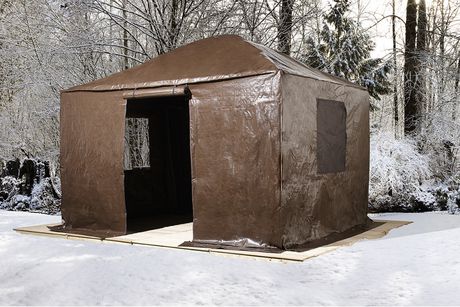
Isn’t that nice? What a lucky gazebo, having such a nice form-fitting covering to keep the snow off of it.
But what about pergolas? Say you have a really weirdly shaped pergola, with odd angles jutting out everywhere. What kind of winter covering is going to fit on top of that?
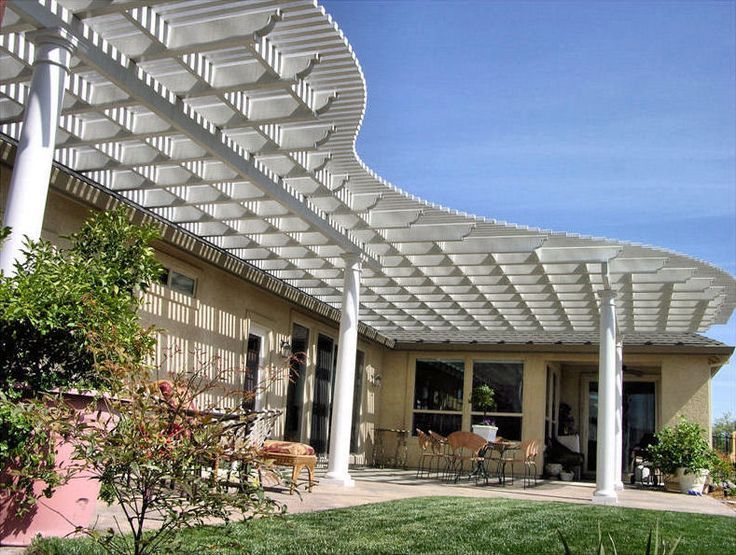
That’s right – none.
Unless the company you bought the pergola from has the perfect covering for that pergola, you are not going to be simply throwing a waterproof tarp over it and coming back in the spring.
It’s just not going to be that easy – sorry.
There are covers available for pergolas, but they’re generally meant for shading purposes, not shielding them from snow purposes.
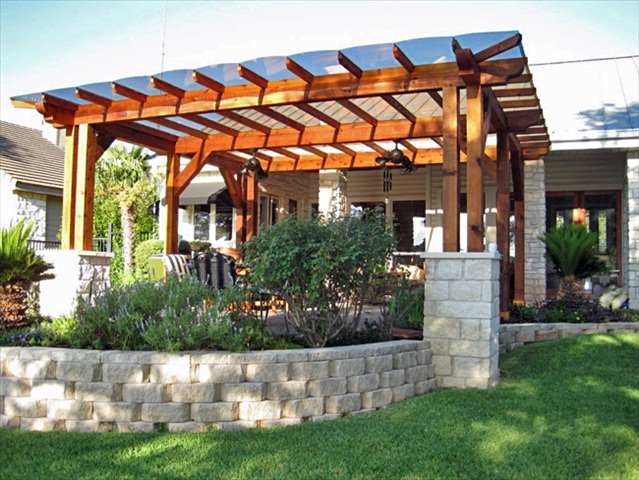
It’s not just the fact that pergolas come in so many shapes and sizes, and that’s only the store bought models!
What about the custom built models that people have constructed all the time?
Our point being, there’s 1001 different pergola designs and shapes and there’s no standard winter covering that can fit over all of them.
Plus, even if you buy a huge tarp, chances are it’s not going to fit properly over your pergola.
That’s not to say it can’t, but it probably won’t.
Too Much Snow – Oh No!
Still, you’re going to want to avoid the following situation…
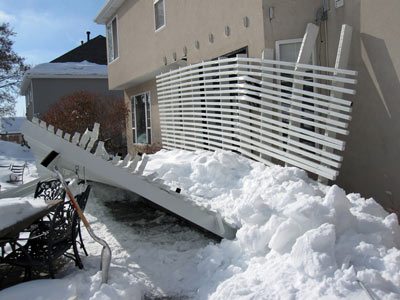
This nice vinyl pergola got crushed under the weight of a ton of snow. This is to be avoided at all costs, obviously.
But how do you think a covering or tarp is going to stop this from happening? It’s not. If anything, collecting more snow on top of your pergola is just going to cause it to fall over or collapse.
Therefore, you’re better off not covering it with anything and just using a broom to sweep the snow off of it the same way you’d shovel your driveway.
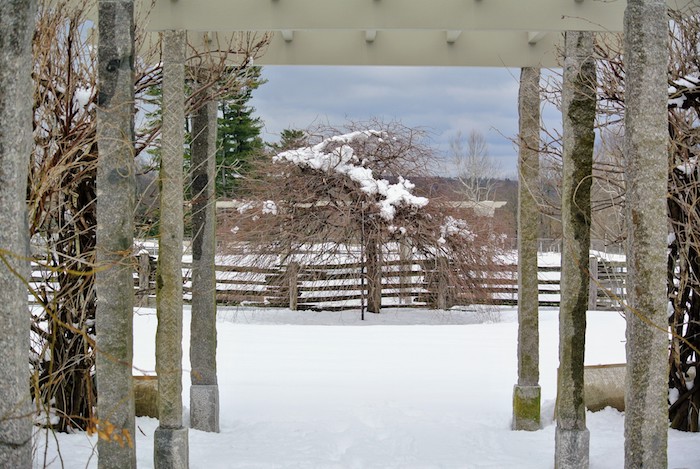
Don’t feel like brushing the snow off of your pergola? I guess this is where we have to ask you – how much do you actually care about that pergola?
We only ask this because if you let the snow pile on top of it, depending on the specific pergola that you have, the weight of the snow just might cause it to cave in in some way.
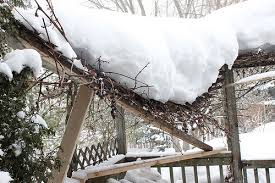
We don’t mean to be all doom and gloom, but pergolas do get wrecked every winter due to too much snow piling up on them.
That said, it all depends on the design. Some pergolas look really cute in the winter time and they do not get damaged.
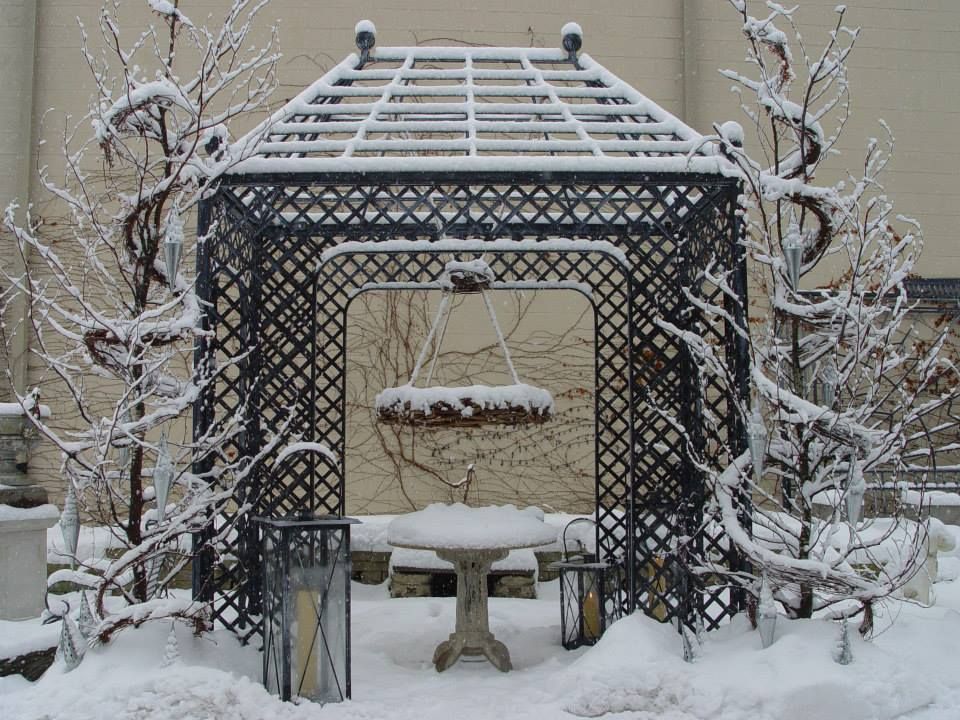
This is because of the way certain pergolas are shaped. Because of the effective shape, the wood or vinyl used in its construction doesn’t allow for too much snow to accumulate, and the snow simply falls off onto the ground, where you can safely shovel it away.
Also, the above type of pergola is also fairly easy to brush the snow off of with a broom or some kind of implement. That is, if you can reach the top. In any case, it’s not the type of pergola to cave in due to snow, simply by design.
This is something you might want to consider before buying your next pergola, but, if you’ve already bought it, you now need to figure out how to keep it in top shape through the winter, without using a tarp or letting the snow simply pile up.
Wood Vs. Vinyl Pergolas Vs. Snow
Wood pergolas are obviously going to be open to more damage from the elements than, say, vinyl pergolas.
Let’s assume you manage to keep the pergola from collapsing under the weight of a huge pile of snow. Then what?
What about the fact that the temperature is changing all the time and snow and ice are building up on your pergola day after day, and they’re not going away.
This is where some of you might want to yell at us and say “I thought you said don’t use a tarp! I kind of wish I used a tarp to protect the wood from the elements!”
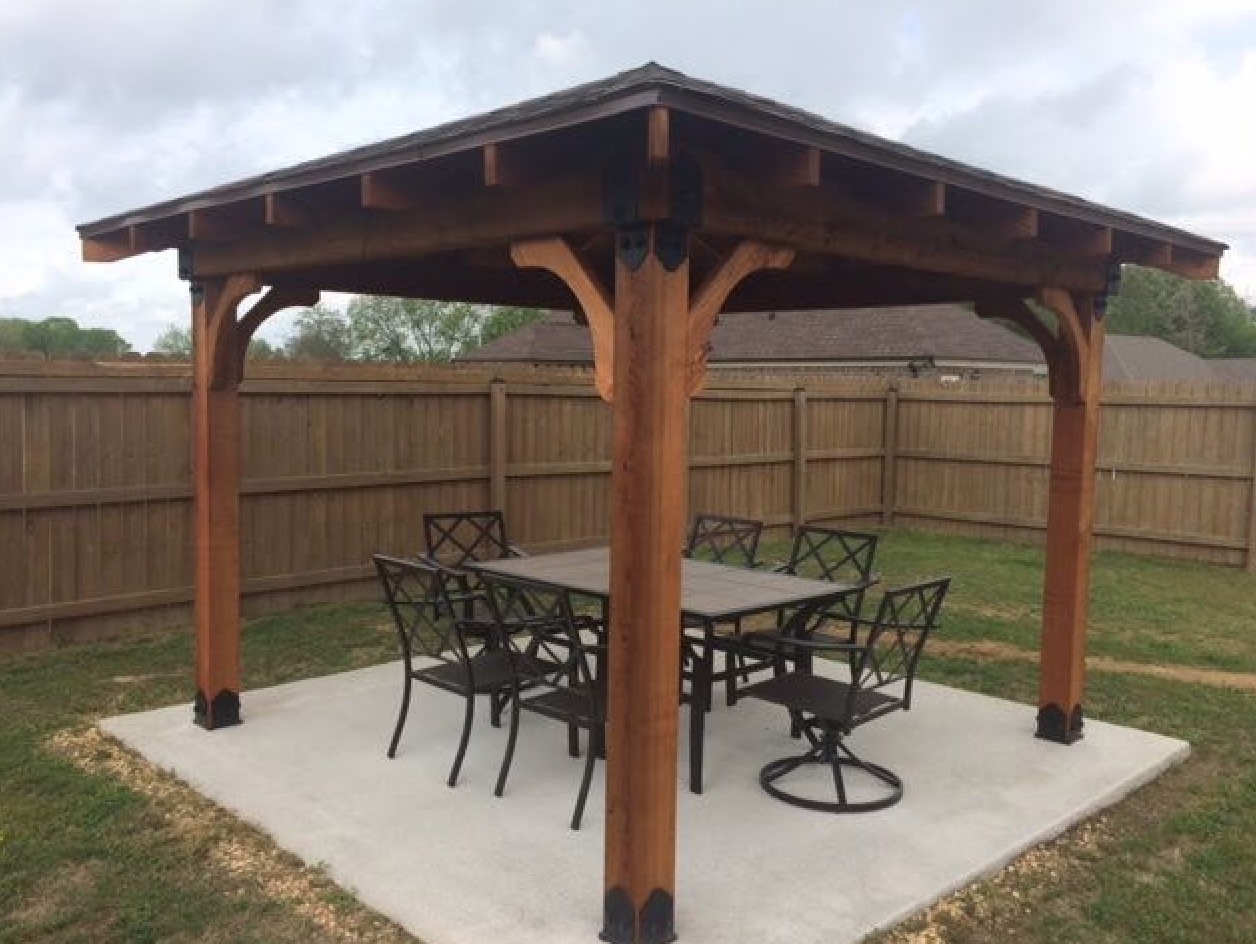
While it is true that some pergolas are made of really nice wood, that no one would ever want to see damaged by the elements, there are other ways of protecting the wood from the elements besides the whole “tarp” idea.
Use A Finish or Sealant on the Wood
Our hope is that you’re not coming across this article the day before it snows.
Ideally, you’d have time to make sure that your attractive wooden pergola is fully prepared for the elements in terms of being sealed properly, just like anything else in your yard that is made of wood and will have to endure the winter months.
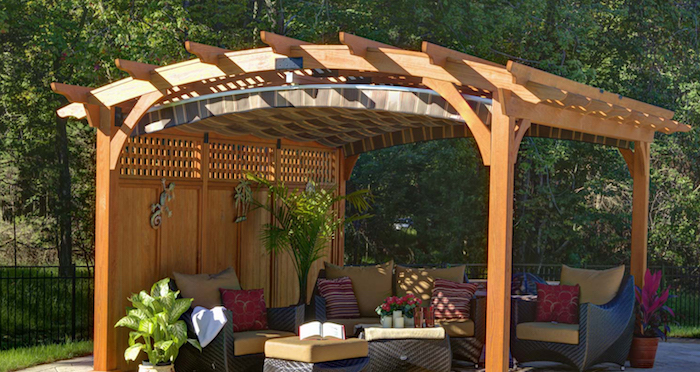
Ok, so assuming you keep the snow off of your pergola and the wood is sealed, what else can you do to protect your pergola during the winter?
Another thing you should do is remove anything that may get caught under the snow, ie. whatever is under your pergola, be it your deck, some type of stonework, or what have you.
When snow falls it will contain everything beneath it, and potentially absorb into the floorboards. This can cause a big mess in the spring when everything melts, causing staining and irreversible damage.
The Broom is The Key
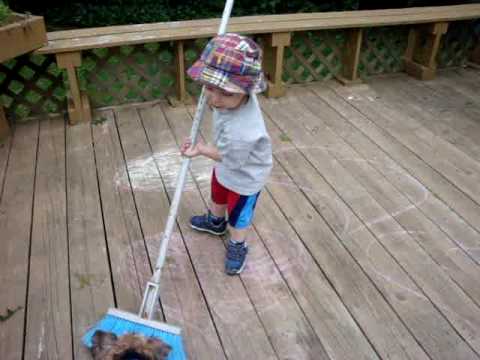
Before the snow comes, sweep the floorboards. Remove any built-up dust and debris. You will also want to wash it down with soapy water to remove any dirt or grease that may have set into the flooring. When the floor is clean, it allows for better airflow to reduce moisture and subsequent mildew build-up.
If you are looking to apply stain to your flooring, this is an ideal time for it. A stain will seal the wood and stop it absorbing moisture (though your building material should already be pressure-treated, staining adds further security).
Perhaps you just like the colour of a stain. Stains need to be reapplied every few years, so now may be the time to do it.
If you are very concerned about mildew or rot, you can apply a water-resistant sealant to the floor as well as the pergola itself.
Remove Plants
Do you have any plants on the pergola? Now is the time to move them to their winter homes.
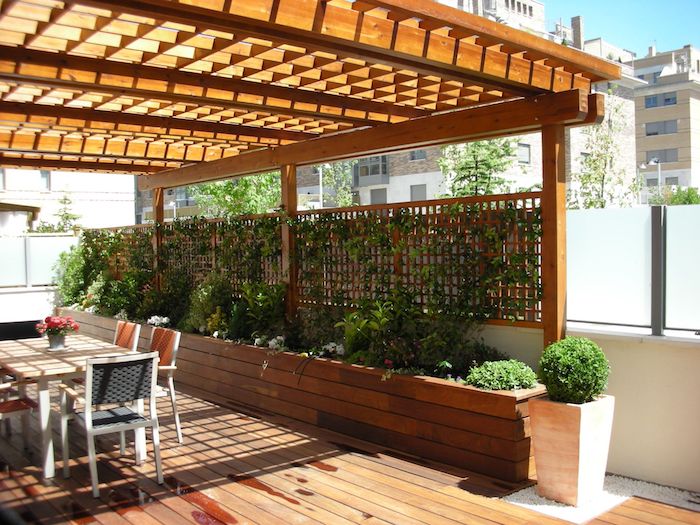
Even if you move the plants inside, and change their planters, you should put the empty planters in the garage or shed.
Leaving them on the pergola (whether empty or full) will leave rings that will be incredibly difficult (downright impossible) to remove in the spring.
Removing the planters will also create more airflow, and thereby prevent the build up of moisture and subsequent mold and rot.
Along with planters, many people like to decorate pergolas with growing vines and ivy. You should trim any excess growth or old/dying limbs.
This will ensure good plant health in the spring, while minimizing the weight strain on the pergola itself. As we’ve said, snow is very heavy and minimizing strain on the posts is ideal.
Now is a good time to tighten all screws and repair any problem areas that you ignored all summer.
Many folks like to use their pergola throughout the winter, so it is understandable if you do not wish to fully lock down the structure.
Winter Party, Anyone?
Now that we’ve mentioned 20-30 things you shouldn’t do, what CAN you actually DO in the winter when it comes to pergolas and fun?
One thing you *could* do is to hire a professional to install a heating system that enables you to host backyard winter parties.
These can be especially beautiful around the holidays and New Year’s Eve.

Winterizing could be as simple as adding a heat source (like a firepit or outdoor fireplace): however, you will still want to clean it thoroughly in the last days of autumn, and remove the planters.
Final Thoughts
By taking careful steps to prepare your pergola for winter, you are lessening the spring cleaning workload, and ensuring the longevity of the pergola, so that you may continue to enjoy it without the added costs of repairs.
If your area gets a lot of snow and cold in the winter, then your pergola is not usable.
If you have any mildew growing on the pergola, now is the time to remove it. You can do this by scrubbing it down with soapy water and a soft brush.
Take that broom and remove any cobwebs. The goal is to clean as thoroughly as possible.
If you have any last minute temptations to use a tarp, so be it, but we’d rather you just cleaned the snow off yourself, as time-consuming as it may be.
That said, some pergolas don’t run into major issues through the winter because they’re built that way. Ask your local home store about that if you’re thinking of buying one there.
Anyway, some folks prefer the rustic look of a snow-covered structure in the yard.
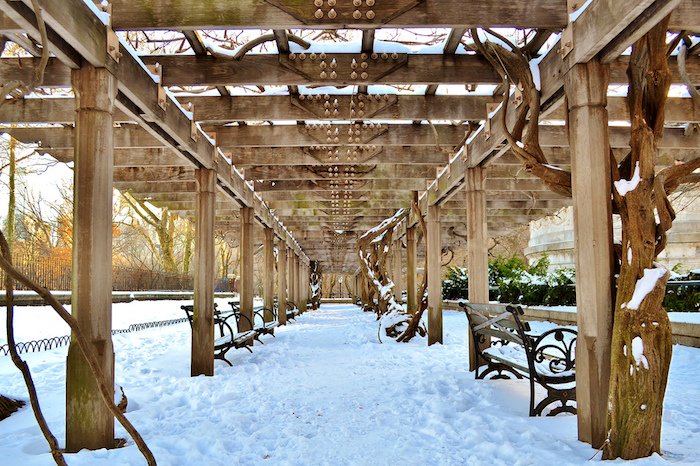
The final word is, once again, clear off the snow! We know we sound like lunatics repeating it so much, but seriously, do it!
This is especially important if your pergola has a roof or latticework. Before it can accumulate too much, remove snow from the roof (and sides or wherever it has built up, according to your pergola’s design) with a broom.
Stay on top of this and you will be well on your way to a lovely spring and summer spent in the pergola once again.
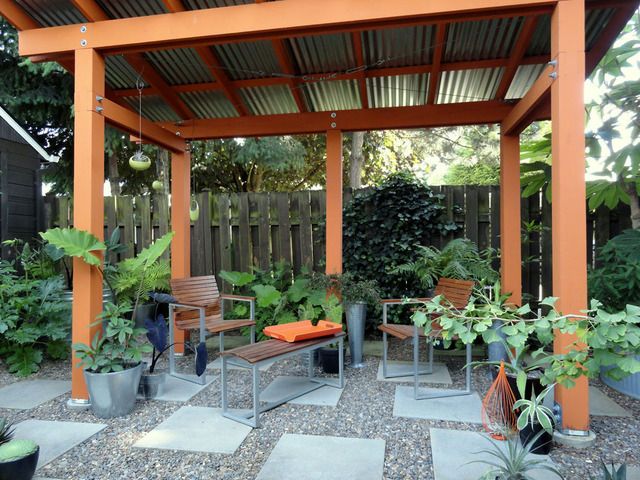
Related posts:
 |
 |
 |
 |

About Simmy Parker
Simmy is an outdoor expert who loves to spend time in the wilderness. She received a BS degree in Civil Engineering at Sacramento State University, and has put her skills to use by helping design and build some of the most impressive structures in the world. However, Simmy's true passion lies in sharing her love of nature with others, and she spends much of her free time leading hikes and teaching people about the flora and fauna that can be found all around them.
Thoughts on "How to Winterize Your Pergola"
 |
 |
 |
 |
Backyard Stuff
You can Get FREE Gifts. Receive Free Backyard Items here. Disable Ad Blocker to get them all now!
Once done, hit anything below
 |
 |
 |
 |

